
Class of 2020
The NMAI is thrilled to launch the digital exhibition, "Celebrating the Class of 2020" to honor the hard work, relentless dedication, and incredible accomplishments of this year's graduates.
The collection of illustration artworks highlights students' school and classroom experiences through the years, resulting in their successful completion.
Viewing illustrations of students and graduates throughout the 20th century encourages us to ponder how society has changed and how we will continue into the future, no matter what obstacles may arise. While this Spring marks an unprecedented time for all Americans, so many have risen to the occasion and proven their ability to move beyond the chaos.

Norman Rockwell (1894-1978)
Norman Rockwell Visits a Country School
1946, oil on two joined photographs
9 ½” x 21 ¼”
“Norman Rockwell Visits a Country School,” Saturday Evening Post, November 2, 1946, pg. 24-25.
Norman Rockwell’s heartfelt depiction of a country schoolhouse shows the tenderness teachers take in educating their students. Clearly a beloved teacher, the students gather around her while she reads to them, each student anticipating her every word, with the exception of one girl simply lost in her own story. Rockwell even included his own charming versions of the children’s drawings hung on the walls.
Stevan Dohanos (1907-1994)
Flowers for Teacher
1946, oil on canvas
30” x 24”, signed lower left
Saturday Evening Post, September 7, 1946 cover
Stevan Dohanos created images for his magazine covers from the everyday activities of his surrounding Westport, Connecticut town, always “finding beauty in the ordinary things of life.” His images were generally humorous and optimistic; they manifested the best of American ideals and were always familiar to the reader. Flowers for Teacher captures a charming moment of a boy hurrying into his schoolhouse twenty minutes late with an apology “gift” for his teacher, snatched from the school’s own flower box!
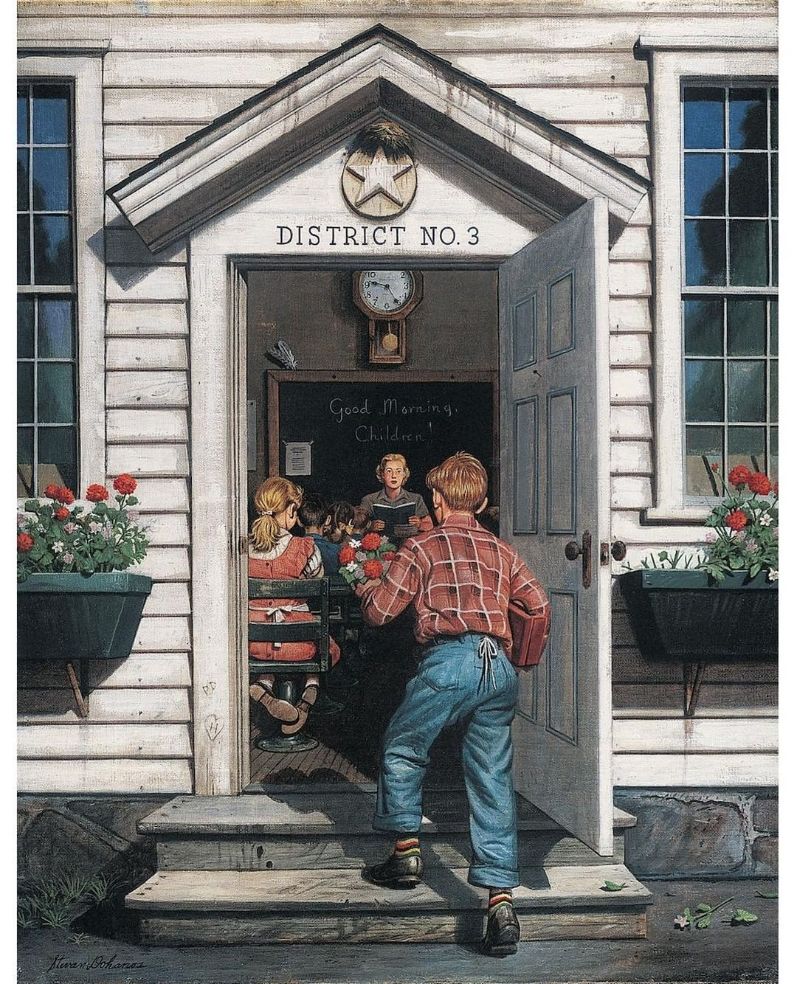
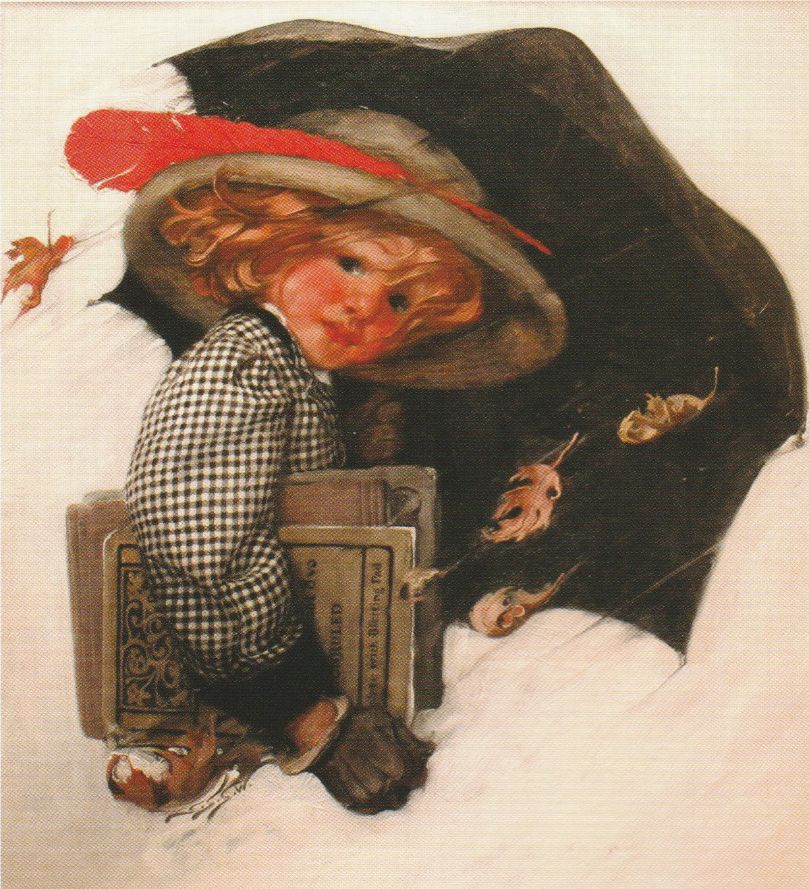
Sarah Stilwell Weber (1878-1939)
Young Girl with Books and Umbrella
1909, oil on canvas
18 ¼” x 21 5/8”, initialed lower left
Saturday Evening Post, October 9, 1909 cover
A student of Howard Pyle at the first School of Illustration, Sarah Stilwell Weber was one of the original female illustrators to be hired by the Saturday Evening Post. Over the course of her career she completed 60 covers for the notable magazine, as well as work for many other popular publications. This 1909 cover is a tender image of a young girl, beautifully dressed in a checkered coat and feathered hat, battling the rainstorm on her way to school, protecting her books beneath a strained umbrella.
F.X. Leyendecker (1877-1924)
Hating School–Study
1921, oil on board
5 ½” x 5”, signed lower center
Leslie’s Illustrated Weekly, September 2, 1915 cover study
F.X. studied at the Académie Julian with his brother, fellow illustrator J.C., where they cultivated their artistic talents. In 1897 the Leyendecker brothers moved to Chicago to open a successful studio, and in 1914 moved to New Rochelle, NY, to work for the leading publishers at the time. This study for the September 2, 1915 cover of Leslie’s Illustrated Weekly humorously highlights a young student’s despondent and grim feelings towards heading to school. With his book bundle resting over his shoulder, the student looks off the canvas, presumably at the playground where he would rather be heading.

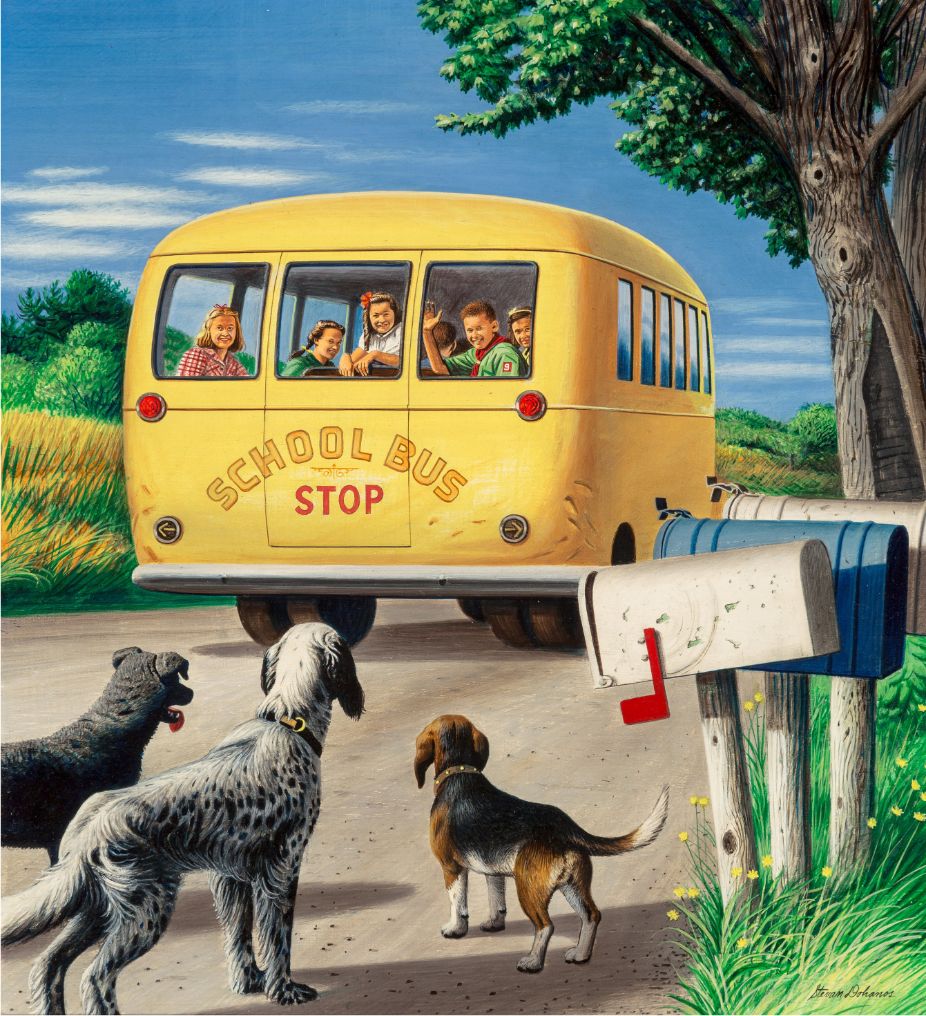
Stevan Dohanos (1907-1994)
Morning Farewells
Saturday Evening Post, September 2, 1944 cover
Stevan Dohanos humorously illustrated children aboard their school bus peering out the back window waving to those left behind at the bus stop. The children are sending all their "goodbyes" to their pets, not their parents. As the bus departs the trio of dogs are already anxious for the students to return to resume their fun after school.
John Newton Howitt (1885-1958)
Art Class
c. 1935, oil on canvas
22" x 19", signed lower left
Trained at the Art Students League in New York City, John Newton Howitt first focused on landscape painting until 1905 when he began selling illustrations to newspapers and magazines. He became a prominent illustrator for mainstream publications as well as pulp magazines. An advocate for illustration art, Howitt stated: "Too much emphasis is put on art fashions of the moment and there is not enough recognition of good painting. We who are not 'modernists' have found that we get no recognition today in art circles unless our work is clothed in the style that is considered fashionable. It does not matter how well or how forcibly we express it; we get no attention from critics or museums or even the large exhibitions. Museum collections of American paintings will never be important as long as they only follow the latest fad in art. Painting should have a more solid basis than fashion. As long as it is not possible for an artist to paint for mass production and do good work, many painters today are quite willing to adapt their prices to the buyer's pocketbook. We artists are ready to meet the private buyer half-way. We believe that no painting stacked against the wall is fulfilling its function. We must sell to continue painting and unless we continue, art will die, because painting is not a part-time job."

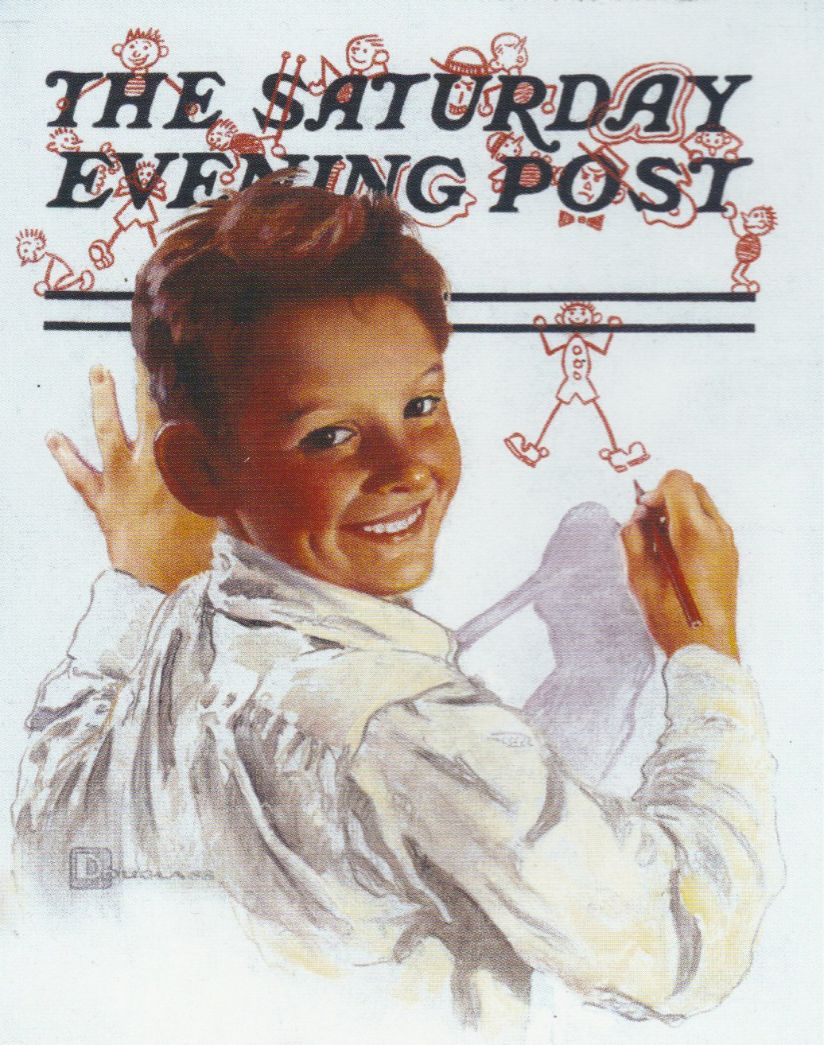
Douglass Crockwell (1904-1968)
Boy Doodling on Masthead
1937, oil on canvas
14 ½” x 12”, signed lower right
Saturday Evening Post, December 11, 1937 cover
Like Norman Rockwell, Douglass Crockwell worked in a realistic style and was particularly good at illustrating children. In fact, he often referred to himself as “the poor man’s Rockwell.” For this 1937 cover of the Saturday Evening Post, Crockwell depicts a schoolboy caught in the act of doodling on the cover of the magazine’s notorious masthead, something many students are guilty of on their test papers and homework.
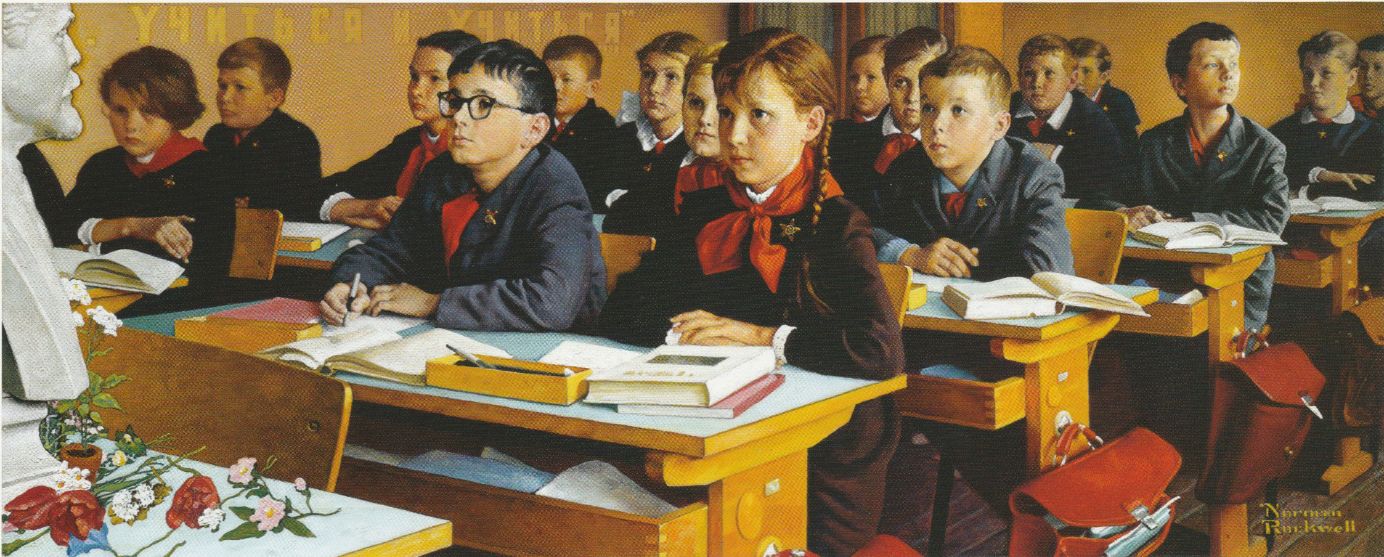
Norman Rockwell (1894-1978)
Russian Schoolroom
1967, oil on canvas
15” x 37”, signed lower right
“Education,” Look Magazine, October 3, 1967, pg. 48-49
Rockwell’s Russian Schoolroom depicts a classroom filled with students all facing the teacher, who is out of view, and a bust of Vladimir Lenin, the Russian revolutionary, perched on the desk to the far left. It sits amongst flower offerings from the loyal Communist youths attending. The students have their textbooks open and are all paying attention with one exception: a single student looking in another direction altogether.
J.C. Leyendecker (1874-1951)
Student – Study
1917, oil on canvas
21” x 15”
House of Kuppenheimer advertisement
In addition to his covers for the Saturday Evening Post, Leyendecker is most closely associated with men’s fashion advertisements, particularly Arrow Collars and the House of Kuppenheimer. His depictions of stylish young men in expertly tailored suits advertised the clothing through branding the idealized lifestyle that comes with it. He created the image of a gentleman one aspires to be like, and the best way to start? Through the clothes!
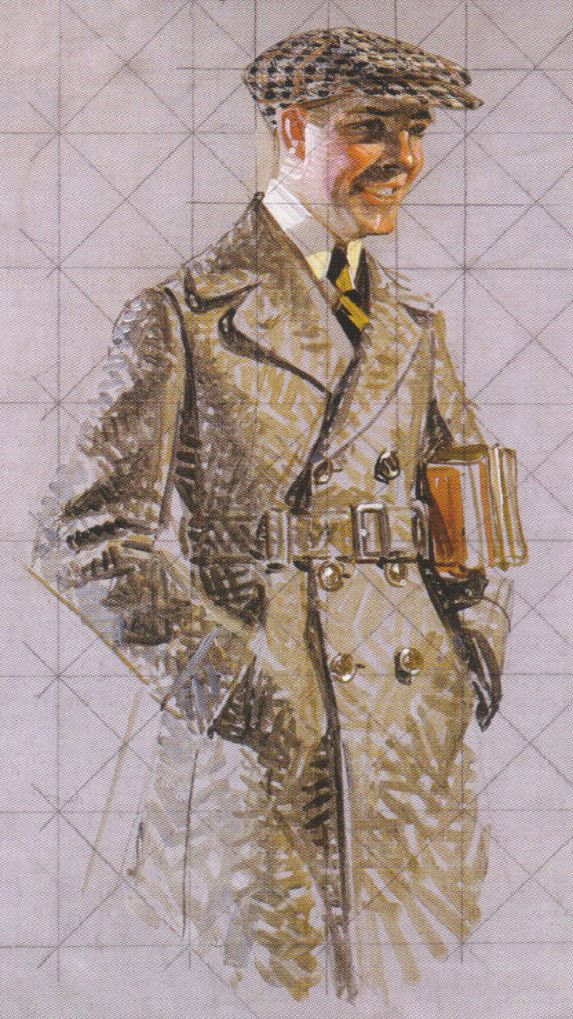
Norman Rockwell (1894-1978)
Young Valedictorian
1922, oil on canvas
30” x 26”, signed lower right
Young Valedictorian is a rare example of a finished Rockwell painting that went unpublished. There is neither the usual irony nor humor present; it is a simple painting of a shy young girl receiving the prize of valedictorian at her school’s graduation. Adorned in a simple white dress, similar to those worn by Harrison Fisher’s graduates in 1903, Rockwell captures this tender moment with subtle hues and remarkable lighting, reminiscent of one of his artistic idols, Rembrandt.
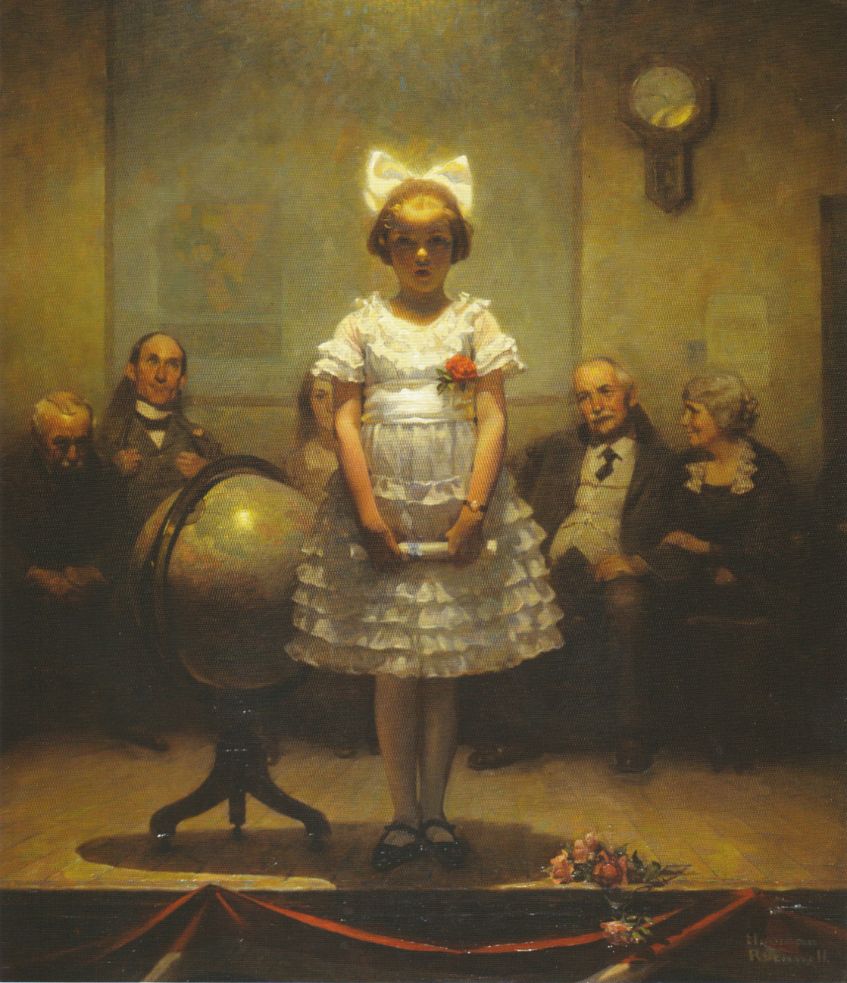
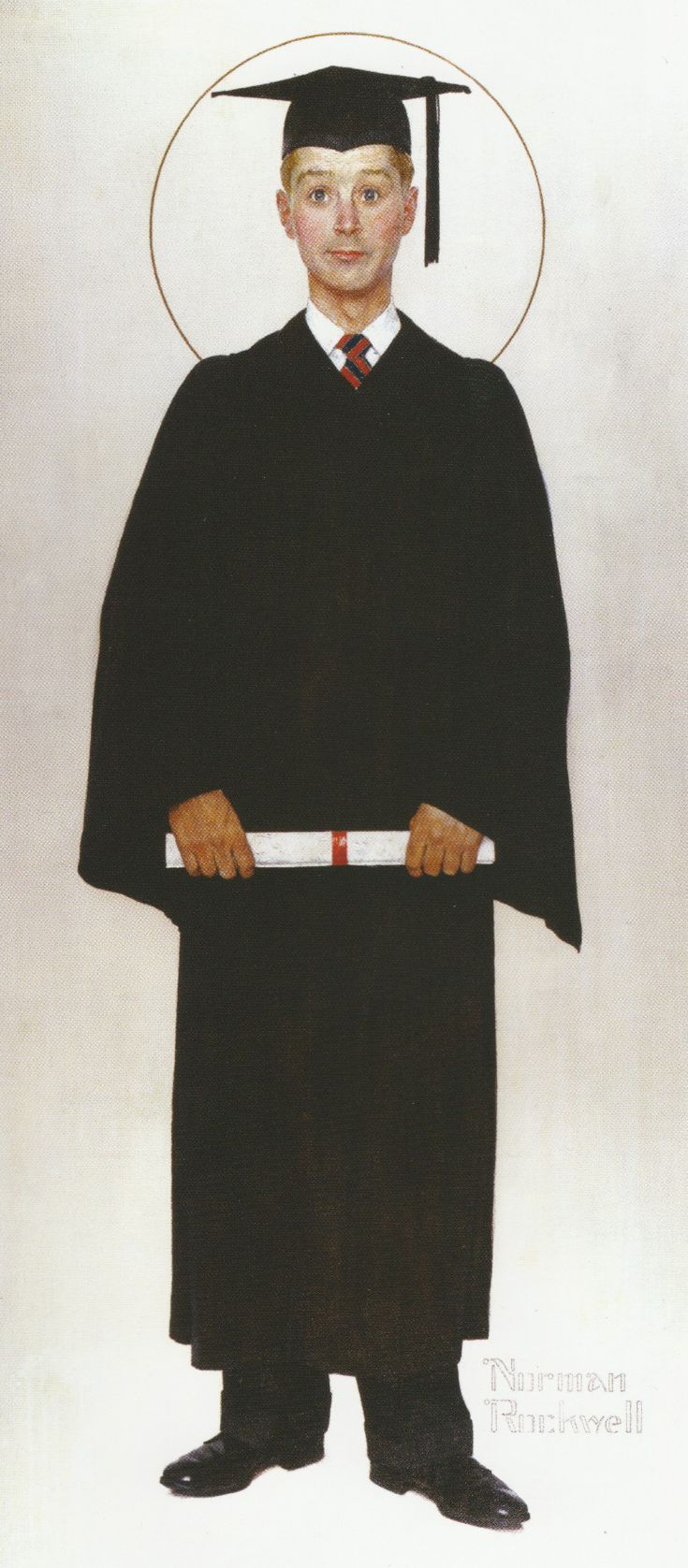
Norman Rockwell (1894-1978)
Boy Graduate
1959, oil on canvas
74 ½” x 36”, signed lower right
Saturday Evening Post, June 6, 1959 cover
Norman Rockwell has perfectly captured the expression of a youthful college graduate with unabashed optimism, coupled with newfound bewilderment at the real world he faces. Rockwell separately provided a background for the printed cover which is comprised of newspaper headlines screaming contemporary problems to be shouldered by this young graduate and his generation. Rockwell’s son, Tom, posed for this near life-size portrait as the boy graduate.
J.C. Leyendecker (1874-1951)
June Graduate
1920, oil on canvas
24” x 20”, signed lower left
Saturday Evening Post, June 5, 1920 cover
J.C. Leyendecker’s renown grew from his ability to establish a specific and readily identifiable signature style. With wide, deliberate strokes done with authority and control he seldom overpainted, preferring to interest the viewer with the omissions as well as parts included. In this Saturday Evening Post cover, Leyendecker painted the graduate in his black robe and cap grasping his diploma in one hand, while resting his other on top of the globe, telling the viewer that he has the whole world at his fingertips now that he has accomplished a degree. Without including a background, Leyendecker conveys an entire story with a single, expertly arranged figure.
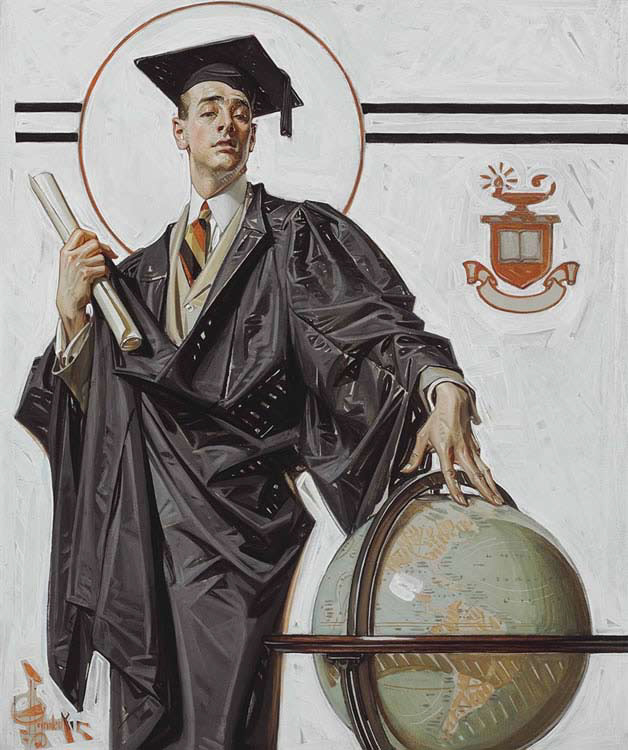

Harrison Fisher (1875-1934)
Graduation
1903, pencil, watercolor and tempera on board
18 ½” x 13 ¾”, signed and dated lower right
The Ladies’ Home Journal, June 1903 cover
Known for his ‘Fisher Girl’ and, more importantly, his ‘American Girl,’ Harrison Fisher’s illustrations of women were recognized as representing the pinnacle of feminine beauty in America during the first quarter of the 20th century. This Ladies’ Home Journal cover depicts a group of women walking in their graduation ceremony dressed in the traditional long white gowns, epitomizing what it meant to be a ‘Fisher Girl.’ She was lithe, elegant and beautiful, but also athletic, independent, and, most importantly, intelligent.
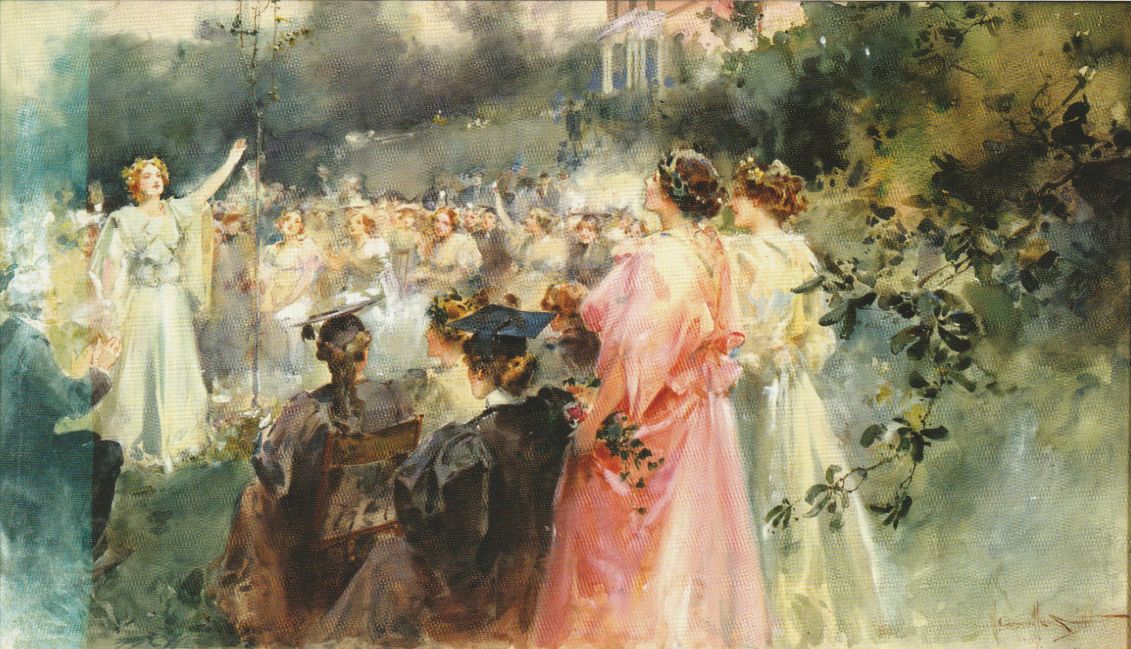
Walter Granville Smith (1870-1938)
Vassar Graduation (Planting the Class Tree)
1897, watercolor on board
16 ¼” x 29”, signed lower right
The Illustrated American, July 29, 1898
Founded in 1861, Vassar College pioneered higher education for women in the United States by offering a liberal arts education of the same caliber to that which was available to men. Walter Granville Smith captured the voracity of the Vassar College graduate in this illustration of the 1898 class planting their ceremonial tree.
